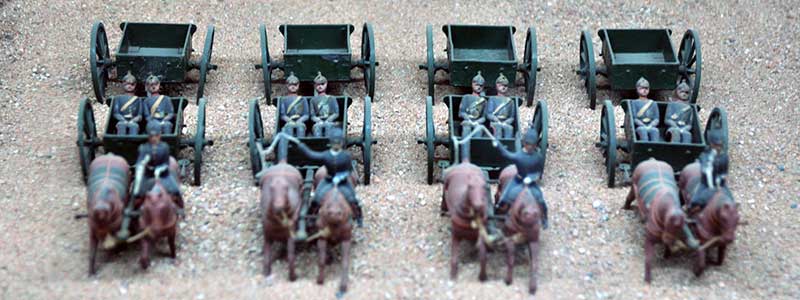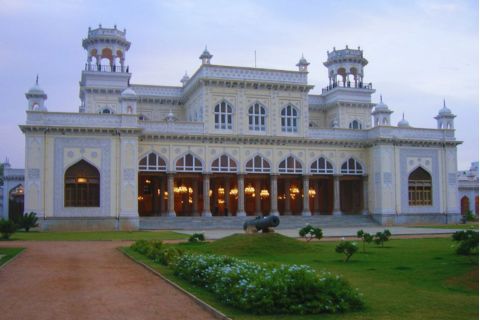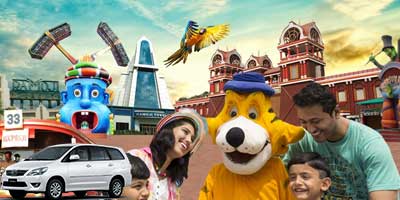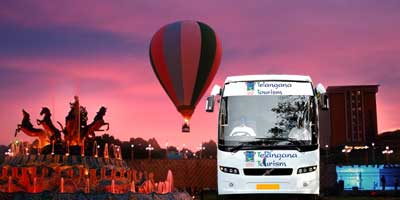
Salar Jung Museum Hyderabad Entry Fee
20 for Indians
500 for Foreign Visitors
Free for Students with ID Cards (upto 18 Yrs)
50% Concession for defence personnel in uniform & organized Kisan parties
50 for Still Camera
Salar Jung Museum Hyderabad Phone
040 2457 6443
Salar Jung Museum Hyderabad Address: 22-8-299/320, Salar Jung Road, Naya Pul, Darul Shifa, Hyderabad, Telangana, 500002, India
Salar Jung Museum Hyderabad Tickets & Packages
Salar Jung Museum Hyderabad Timings
| Day | Timing |
|---|---|
| Monday | 10:00 am – 5:00 pm |
| Tuesday | 10:00 am – 5:00 pm |
| Wedesday | 10:00 am – 5:00 pm |
| Thursday | 10:00 am – 5:00 pm |
| Friday | Closed / Holiday |
| Saturday | 10:00 am – 5:00 pm |
| Sunday | 10:00 am – 5:00 pm |
Popularly known for its one of the largest one-man collection of the world, Salar Jung Museum is one of the most famous Hyderabad sightseeing places that must be visited. What makes Salar Jung Museum all the more special is its location. It is located quite close to the other tourist spots of Hyderabad such as Charminar, Mecca Masjid, High Court, State Central Library, etc.
The museum has often appeared in print and electronic media for not only its collection but because of its efforts to preserve the history through digitalization and various latest means. With a magnificent building that paves way into a rich history from all over the world, Salar Jung Museum is a place that no art lover or a history enthusiasts can miss. It is nothing less than a treasure house that values and respects the unparalleled feat that Europeans, Asians and eastern countries have achieved in varied fields, ranging from art to science and literature.
Location of Salar Jung Museum
On the southern bank of the river Musi of Hyderabad, Salar Jung Museum is situated on Salar Jung Road, at Dar-ul-Shifa. It stands near the Minar Function Hall, which does act as a landmark, although this popular monument rarely needs any additional information.
History of Salar Jung Museum
Salar Jung Museum of Hyderabad is the third largest museum in India. It was declared open on 16th December, 1951 by the first prime minister of India, Jawaharlal Nehru. In the year of 1968, the entire collection of the museum and the Salar Jung Museum library was shifted to the present building from Diwan Deodi. In 2000, two additional buildings were also added.
Spread across an area of 10 acres and built in two floors, the Salar Jung Museum present wide range of artefacts which have been majorly collected by Mir Yousuf Ali Khan who is also known as Salar Jung III along with Nawab Turab Ali Khan (Salar Jung I) and his descendants. Mir Yousuf Ali Khan dedicated his entire life collecting antiques and artefacts and spent a considerable amount of his wealth collecting the same from all over the world.
Salar Jung III/Nawab Mir Yousuf Ali Khan had spent forty years of his life in collecting various art pieces and manuscripts from around the globe. He has left his position as the then Prime Minister to pursue his passion. Initially his collection was stored in the ancestral palace of Salar Jungs, Dewan Deodi.
After the demise of Salar Jung III, the idea to create museum arose in the minds of Sri M.K. Velodi, the then Chief Civil Administrator of the Hyderabad State. It was then a renowned art critic, Dr. James Cousins, was given the responsibility to collect and sort all the items from different palaces of Salar Jung III.
The museum was under the direct purview of Government of India till 1996. However, later via an Act of Parliament (Act of 26 of 1961), it was recognised as an Institution of National Importance and its administration came under an independent board of trustees, Governor of Andhra Pradesh, along with members who represented Government of India, Andhra Pradesh State, Osmania University and Salar Jungs Family.
Architecture of Salar Jung Museum
Salar Jung Museum is semicircular shaped with an imposing white structure, that showcase decades of regality and richness. This magnificent building is further divided into 38 galleries which are spread over two floors.
It comprises of three buildings, namely Eastern Block (Mir Laiq Ali Khan Bhavan), Western Block (Mir Turab Ali Khan Bhavan) and the Indian Block. Most of the galleries, 27, are in the Indian/ Central Block of the museum. The Western Block of the museum has 7 galleries while the Eastern Block houses 4 galleries.
There are also many other sections situated inside the monument such as Photo section, Education Wing, Chemical Conservation Laboratory and a Display section. This is in addition to a reception center and a Sales counter.
Collections at Salarjung Museum
With a collection of close to 43000 art objects, 9000 manuscripts and 47000 printed books, Salar Jung Museum promises a rich experience to all its visitors. The museum has 38 galleries which are spread over two floors. An impressive number of around 13,654 objects are being displayed in all the 37 galleries of Salar Jung Museum.
The collection in the museum consists of Indian Art, Far Eastern Art, European Art, Children Art, Middle Eastern Art, as well as Founders gallery and rare manuscript section. One of the major attractions of the museum is the 19th Century British Musical Clock. This clock was sold by Cooke and Kelvey of England.
Veiled Rebecca, marble statue which was created by an Italian sculptor G B Benzoni in 1876 and was brought by Salar Jung I in 1876 while on his trip to Italy, is another highlight that attracts most of the attention.
There is also a set of ivory chairs, which was presented to Tippu Sultan of Mysore by to Louis XVI of France. Rehal, the jade books stand; a dagger of Jehangir, a fruit knife of Noorjehan, both decorated with precious stones; Arabic and Persian Manuscripts; a rare manuscript on mathematics – Lilawati; valuable medical encyclopaedia belonging to ancient India; rare paintings, etc.are just a few of the extensive collection here at Salarjung Museum.
The collections at The Indian Section are from almost all around India. Karnataka, Andhra Pradesh, Himachal Pradesh, Tamilnadu, Uttar Pradesh, Madhya Pradesh, Orissa, Maharashtra, Kerala, Punjab, Rajasthan, Gujarat, West Bengal, Jammu & Kashmir are a few of the states from where various objects were procured.
The Western Section of the gallery display objects from countries like France, Italy, Belgium, Germany, Czechoslovakia, Austria, England and Ireland. Along with this, visitors can also see rare objects from Japan, Burma, China,Thailand, Korea, Nepal, Indonesia, Syria, Persia, Arabia and Egypt in the Eastern Section.
Galleries at Salar Jung Museum
Some of the prominent galleries at the Salarjung Museum are mentioned below-
Founders Gallery- It displays portraits and items belonging to the royal family, including the portraits of Mir Alam, Munir-ul-Mulk II Mohd. Ali Khan, Salar Jung I, Salar Jung II, Salar Jung III.
South Indian Bronzes- It displays various items of bronze, ranging from figures of Hindu Gods and Goddesses, coins belonging to varied decades and items such as decorative chains, lamps, etc. , some of which dates back to as early as Late Pallava period and 12th century.
Minor Arts of South India- This gallery displays and exquisite collection of ancient Indian. Although it has mostly wood carvings from South India, there are metal ware and irvy carvings as well.
Indian Sculptures- Although this collection is not as rich as most other galleries, in terms of the number of items, it nevertheless, displays a significant range of sculptures made out of stone. A standing figure of Buddha form 3rd century AD to figures from Kakatiya Period along with various Jain Figures can be seen here.
Indian Textiles- This gallery presents a rich collection of textiles from different parts of the country. The range varies from Bandhani textiles to patola and Kalamkari and much more.
Ivory Objects- This is one of the most popular galleries with display of ivory objects, ranging from set of ivory chairs (which were presented to Mysore’s Tipu Sultan by Louis XVI of France), bedsteads, carved paper cutters, decorative boxes to animal figures, procession scenes, etc.
Arms and Armors- As the name suggests, this section displays an extensive kinds of arms used in bygone eras. Its most attractions display includes Quma (hunting daggers), carved swords with diamond quillons along with weapons belonging to Mughal King Aurangzeb, Mohammed Shah, Bahadur Shah and Tipu Sultan.
Jade Gallery- This gallery comprises of the items made with semi precious stone- Jade. Most of the items belong 17th to 19th century. The prominent displays of this gallery are Jehangir’s jade dagger and Noorjehan’s fruit knife, decorated with various other precious stones. Another prominent display is the jade book-stand with the title of Mughal Emperor Shahjahan inscribed on it.
Indian Miniature Paintings- Miniature paintings are displayed in this gallery. Paintings displaying Mughal miniatures, Deccan Qalam, Jain Kalpasutras from 14-15th century, etc., attract every art lover.
Modern Paintings- This section consists of approximately 85 artists’ works, including from renowned painters such as Raja Ravi Varma, Abanindranath Tagore, Nandalal Bose, RabindranathTagore, M.F.Hussain, K.K. Hebbar, N.S.Bendu, Dinakar Koushik, K.S.Kulkarni and many more.
Bidri Gallery- This gallery displays bidri objects, prepared in primary two techniques, Tahnashin and Zarbaland. Some of the prominent displays are pandans, huqqa bottoms, trays, vases, surahis, aftabas, etc.
Middle Eastern Carpets- Beautiful carpets from Persia adorns this gallery. You can see works from different Persian looms such as Bokhara, Kashna, Tabriz, Kirman and Shiraz.
Arabic Persian Manuscripts- This gallery houses one of the most precious displays of the museum - a copy of Holy Quran, belonging to 9hh century, AD. Along with it, it displays other important manuscripts such as an illuminated Holy Quran, Shah-nama by Firadausi, Quatrain of Omar Khayyam, etc.
Egyptian And Syrian Art- This gallery mostly displays replicas of various original Egyptian art objects such as replica of Tutankhamen throne (1340 BC) along with varied furniture, ivory carvings and applique work. It also has Syrian art pieces such as beautiful furniture, decorated with mother of pearl.
Fat Eastern Art- This gallery displays a wide array of collection belonging to Sino-Japanese artists. The work range from bronze, wood and inlay work, porcelain,enamel, to embroidery and painting.
Chinese Collection- This gallery showcase items dating back to 12th-19th centuries. Lacquered and inlaid screens, lacquered boxes, vases, furniture, lacquered ivory figures, snuff bottles and carved tasks, are some of the things displayed here.
Japanese Art- As the name implies, this gallery presents an opportunity to see some of the japanese arts such as Satsuma ware (vases, plates, tea sets, etc.), Imari porcelain, Japanese embroideries, lacquer works along with Samurai swords, comprising of both Katana (large sword) and Wakizash, (small sword).
Far Eastern Statuary- Here, you will see sculptures in bronze, wood and metal, from India, Japan, China as well as Nepal and Tibet. It display Buddhist sculptures along with sculptures of Samurai warriors.
Euopean Art- this gallery boasts of a unique european collection. It showcases, oil paintings, furniture, glass and ivory objects,enamelware clocks, statues and figures. The prominent display is the wooden statue of Mephistopheles and Margaretta.
European Paintings- It consists of painting from various European countries. Works by Italian painters such as Canaletto, Hayez, Blass, Marc Aldine, Diziani, Matteini and English painter T.S. Cooper along with many other artists are on display here.
European Porcelain- This gallery exhibits breathtakingly attractive porcelain pieces from places like France, Germany and England. Some of the prominent collection includes Dresden porcelain, Sevres collection, English porcelain comprising of Manchester, Worcester, Derby, Chelsea, Coalport, Minton, spade Wedgwood. The display ranges from pottery to figurines.
European Glass- Here you will find amazing art pieces made of glass. Artefacts have been procured from countries such as Italy, France, Belgium, Istanbul and Czechoslovakia, America and England.
European Bronze- This gallery comprises of a few of the original as well as replicas of popular sculptures such as the Statue of Liberty, Alexander, Augustus Caesar, etc.
European Marble Statue- This gallery also comprises of many original sculptures as well as copies of many historical /mythical figures by great artists. The original statue of Veiled Rebecca, which was brought by Salar Jung I, is the of the major attractions of this gallery as well as of the museum.
European Clocks- This gallery present an impressive collection of Clocks, from countries like England, Switzerland, Germany, Holland, France and others. British Bracket clock displayed at this gallery generates maximum interest among visitors.
European Furniture- It showcases amazing range of furniture from mostly France and England. Some of the displays comprise of furniture (cabinets, consoles, chairs, sofa sets, tables, etc.), belonging to the period of Louis XIV (1643 -1715), Louis XV (1715-44); Louis XVI (1774-92) and Napoleon I.
Salar Jung Museum Library
One of the biggest highlights of Salar Jung Museum, apart from other displays is the library. The Salar Jung Library boasts of some rarest of rare collection. With 8,000 manuscripts and 60,000 printed books, the library in undeniably one of the best libraries in the world. The quality of collection set it aside from other libraries.
Major part of the books, around 40, 000 were collected by Mir Yousuf Ali Khan, Salar Jung III, and his ancestors. Opened to the public via an Act of Parliament in 1961, the Salar Jung Museum Library presents an amazing display of calligraphy and ornamentation by book binder, artists and calligraphers. Some of the work comprises of exquisite use of lapis lazuli, pearl, gold and mineral colours as well.
Manuscripts- Manuscripts in languages such as Arabic, Sanskrit, Telugu, Hindi, Persian, Urdu, Dakhni, Turkish, Pushtu, and Oriya on around eight-four varied subjects are displayed. These manuscripts are on varied media such as textile, palm leaf, paper, parchment, stone, wood, and even glass. Subjects varying from science, medicine, to games, music, magic and ethics have been covered.
Manuscirpts of various religions like Islam, Hinduism, Zoroastrianism and Christianity are also kept here. The library also houses one of two copies of miniature version of Holy Quran with a size of 2.4 cms; the other being in Iran. It houses around 2,500 manuscripts in Arabaic language, 4,700 in Persian language and approximately 1,200 Urdu language. This is in addition to 25 manuscripts in Turkish and many more in Sanskrit, Oriya, Telugu, and Hindi (in Persian script).
Printed Editions- Salar Jung Museum Library boasts of equally enviable collection of printed books. Its English section is comprised of around 40,000 books. The Oriental Section has approximately 19,000 books, out of which 13,000 printed books are in Urdu, 3,500 in Persian language, 2,500 in Arabic language and 160 are in Turkish.
Research and Publications
The museum not only has a collection of rare books but also publishes many catalogues consisting details on manuscripts and exhibitions. So far, it has published around 19 detailed catalogues. Along with these, it also has published a unique copy of Holy Quran which consists only 30 folios. Here, each line starts with Alif, he first alphabet of Arabic.
Museum's Manuscripts section is also conducting research on parchment.
Activities at Salar Jung Museum
Along with the enviable collection, Salar Jung museum also plays an active role in organizing various workshops and exhibitions by collaborating with International museums and organizations. Seminars and workshops are specially organised on specific occasions such as birth anniversary of Salar Jung I, Museum Week, Children’s Week, etc. It also publishes books in English, Urdu and Hindi languages as well as guide books, research journals and brochures, offering a complete understanding of the museum and the history behind it.
Timings and Entry Fee of Salar Jung Museum
Entry Fee- The entry fee for Salarjung Museum is Rs 20 per person, while for students and children below 18 years of year, it is free. Students need to produce an identity card to avail free entry.
There is also a 50% concession for defense personnel in uniform and kisan parties. General public are also given concession on entry ticket during the Museum Week, which starts on 8th and ends on 14th January of every year. For foreign tourists, the ticket price is Rs.500 per person.
You can also click photos at the Salarjung Museum with a minimal camera fee. The fee for mobile and still camera is Rs.50.
The facility of audio tour is also available. The fee for this approximately 90 minutes audio tour is Rs.60 per person.
Timings of Salar Jung Museum- The timings are from 10 am to 5 pm on all days except Fridays.
How to reach Salar Jung Museum
Once in Hyderabad, you will not face any difficulty in reaching Salar Jung Museum. It is easily accessible by both rail line as well as road.
By Railways- It is not more than 3 kms away from the main railway station Kacheguda and Nampally. Travellers can board local trains (MMTS) from all around the city and reach here. From here one can opt for a taxi or hire auto rickshaws.
If a lover of walking, you can cover this distance on foot as well, which in turn given an opportunity to explore the surrounding areas and the local lifestyle. There is also the option of travelling by metro. The nearest metro station is M G B S Station Metro Station on the Red Line.
By Road- Afzalgunj Bus Stop and the Salar Jung Museum Bus stand are the nearest bus stops. You can also hire a cab service or auto rickshaws to reach Salarjung Museum. One of the best ways is to hire a taxi of your choice from the leading car rental companies in Hyderabad and cover all the nearby tourist attractions within the same day.
Facilities at Salar Jung Museum
Making it absolutely convenient for visitors, Salar Jung Museum presents a wide array of facilities.
Library permit- Upon making a special request and receiving passes, scholars can use the library and utilise the extensive and rare range of printed books and manuscripts.
Cloak Rooms- Visitors can store their luggage safely at the cloak room. It is near the booking counter.
Wheelchair accessibility- There are specially designed toilets for visitors who have difficulty in mobility. Wheelchairs are also provided at the museum.
Cafeteria and Coffee shop- Telangana Tourism Department run a fully functional cafeteria in the main building of the museum. The western block also houses a small coffee shop.
Souvenir Shop- The ground floor of the museum houses a souvenir shop which is operated by Handicrafts & Handlooms Exports Corporation of India Ltd. (HHEC), New Delhi.
Reading Room- The second floor of the main building consists of the reading room. A wide range of local papers in Telugu, Urdu and English are provided along with some foregin magazines.
Audio Guide- Visitors can procure Audio guide from the ground floor of the main building. It is available in three languages, English, Hindi and Telugu.
Auditorium and Lecture Hall- Salar Jung Museum also consists of an auditorium with a seating capacity of 200 seats and a lecture halls which can accommodate around 100 people.
Easy maneuvering- Signs for drinking water and toilets have been placed at regular intervals for the ease of visitors.
Drinking Water- There are around 17 water coolers at the museum, offering supply for purified water.
Restrooms- Facility of clean restrooms are provided at various places of the museum.
Things to keep in mind while visiting Salar Jung Museum
- Do not smoke within the museum premises, it is prohibited.
- Refrain from touching the items on display.
- Use of cellphone in the galleries is also to be avoided.
- Items such as knives, razors, lighters, matchboxes and scissors are not allowed inside.
- Do not liter, there are dustbins at various places which should be used to throw any kind of discard.
- Suggestion book can be used if you wish to make any suggestions or complement any aspect of the museum.
Hyderabad Tourism, a division of Holidays DNA makes your trip to this city all the more enjoyable through the various Hyderabad Tour Packages it offers at pocket friendly prices. Choose the package that suits you best and embark on a beautiful journey to this happening city. Please fill the Contact Us form for further details and we will get back to you.
Comments
Reviews & Rating
Reviews of Salar Jung Museum Hyderabad
Rating:
 5 stars
5 starsWe went salar jung museum recently. This place is located near charminar so you can club both together. Opening timings for Salarjung museum is from 10 am to 5 pm. The entry fee for the museum is only rs.10 per person! The awesome collection is worth even if the price was higher. We first went there, spend few hours and saw the objects, and by evening we went to charminar which look better in evening. Overall great experience.
Rating:
 5 stars
5 starsWhoever is going to Hyderabad, should visit Salarjung Museum. This is one of the best museums in India. Awesome collection, rare stuff from all over the world and well maintained. It has paintings, manuscripts, sculptures, ceramics from different parts of world. The collection are of nawabs but primarily of the Salar Jung III - Mir Yousuf Ali Khan.
Rating:
 4 stars
4 starsSalar Jung Museum is one of the most important tourist places in Hyderabad, yet I happen to go there only recently. It has unique collection of not only things from India but from other parts of the world too. It was like a rare peek into the ancient era. I loved the clock and the marble statue of Veiled Rebecca the best. There is also set of ivory chairs which were given to Tipu Sultan. There is amazing collection of paintings, weapons, manuscripts, and personal belongings. It took me more than 3 hours to see them.
Rating:
 4 stars
4 starsThis museum can easily be called as the best in India, according to me it should be the no 1. It has rare collection of Nawabs and objects brought from various parts of the world. Salarjung Museum closes by the time 5 pm and opens by 10 am. So go there by afternoon itself as it will take easily four hours to cover entire museum. Better to rent audio unit, it helps in navigation the museum and tells about the history.
Rating:
 4 stars
4 starsSalarjung museum has finest collection from the golden era of Hyderabad, there are also personal collection of Nawabs which were brought from their different tours. It has impressive weapon collection. Even ivory objects are worth seeing. I found the navigation here slightly difficult, apart from that there was no issues in the museum. The entry fee is also very less, just rs 10.
Rating:
 4 stars
4 starsI went to Salarjung Museum at 4 pm, the wrong time. Its timings are from 10 am to 5 pm, which I got to know after reaching there. I wasn’t expecting that it closes this early. So had just one hour to see as much as I can, whatever I could see was amazing. The collection is good. I am planning to go again, this time with some more time at hand. The entry price is Rs. 10 only
Rating:
 5 stars
5 starsI loved the Salarjung Museum of Hyderabad. It has brilliant collection, saw the famous clock too. But i liked the marble statue best, veiled Rebbeca. It is said that there are four statues of rebbeca, other are in Georgia, Massachusetts and one in Hyderabad’s salarjung Museum. This statue is captivating, intricate work of a great artist.




